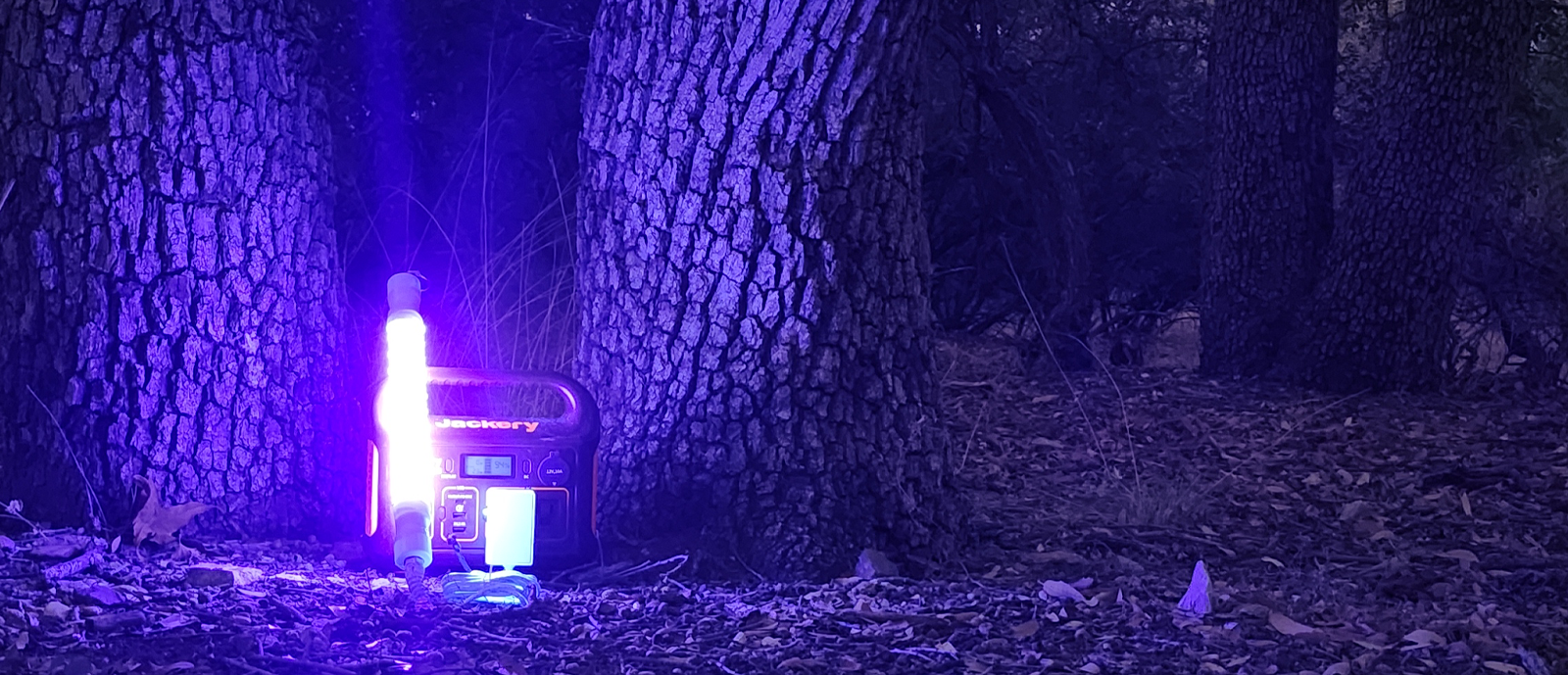
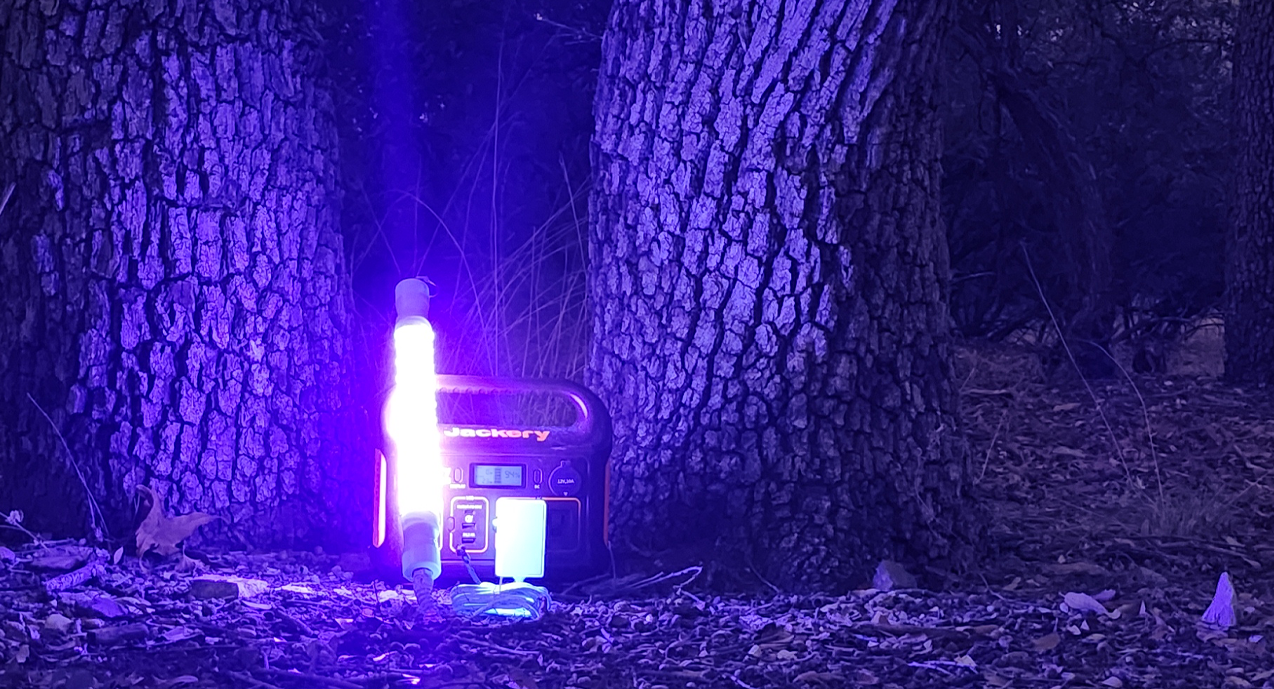
entolight
LED UV blacklight
entoquip light
LED blacklight for surveying nocturnal insects22 in stock
edit quantity in cart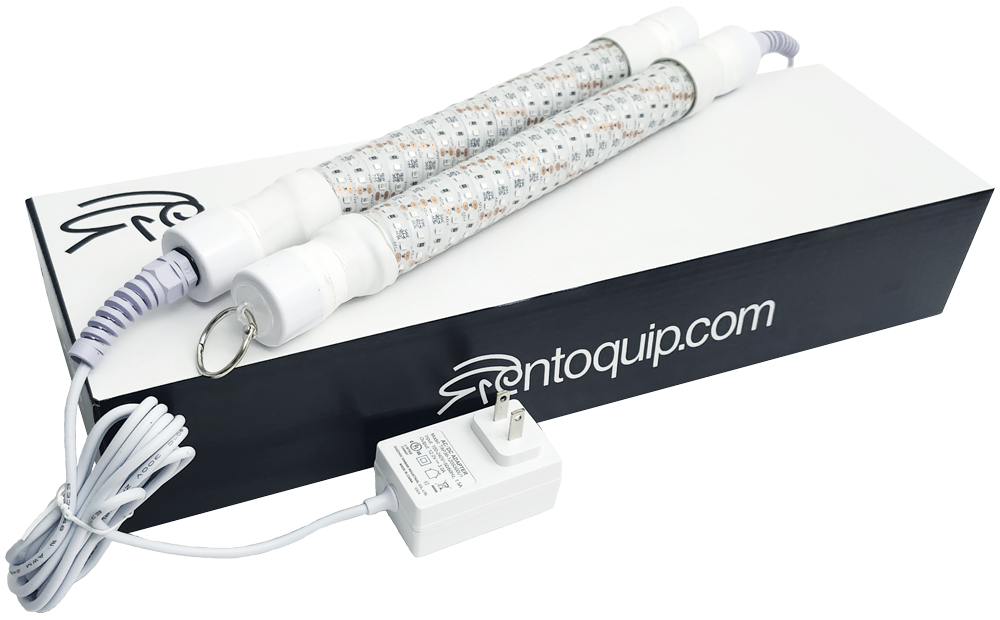
The entoquip light is an LED blacklight built to attract and collect night-flying insects. It has 240 diodes, emitting two wavelengths of UV light (365nm and 395nm). This covers much of the UVA spectrum, mimicking the moonlight that flying insects use to orient themselves. The light is made to survive, with long-lasting LEDs and a sturdy construction that can withstand bumping, dropping, and wet conditions. The compact design easily fits in a backpack to be taken on remote excursions.
See our entoceptor for a mobile frame and canvas set-up to hang our lights on!
LED blacklights have a high efficacy at attracting insects. learn more
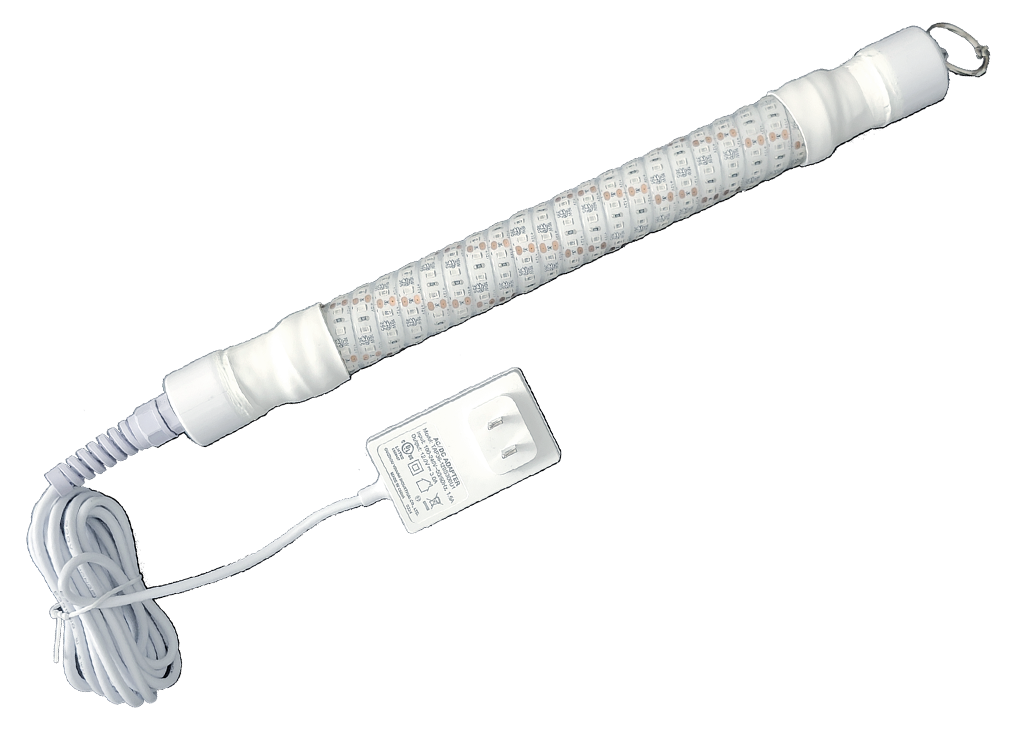
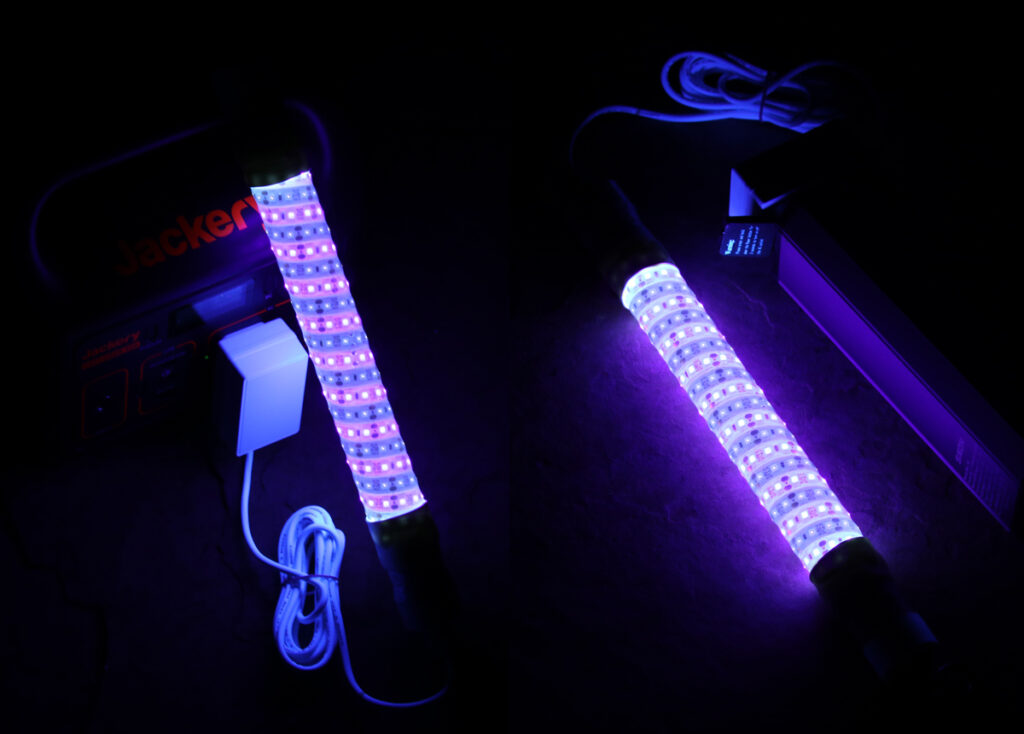
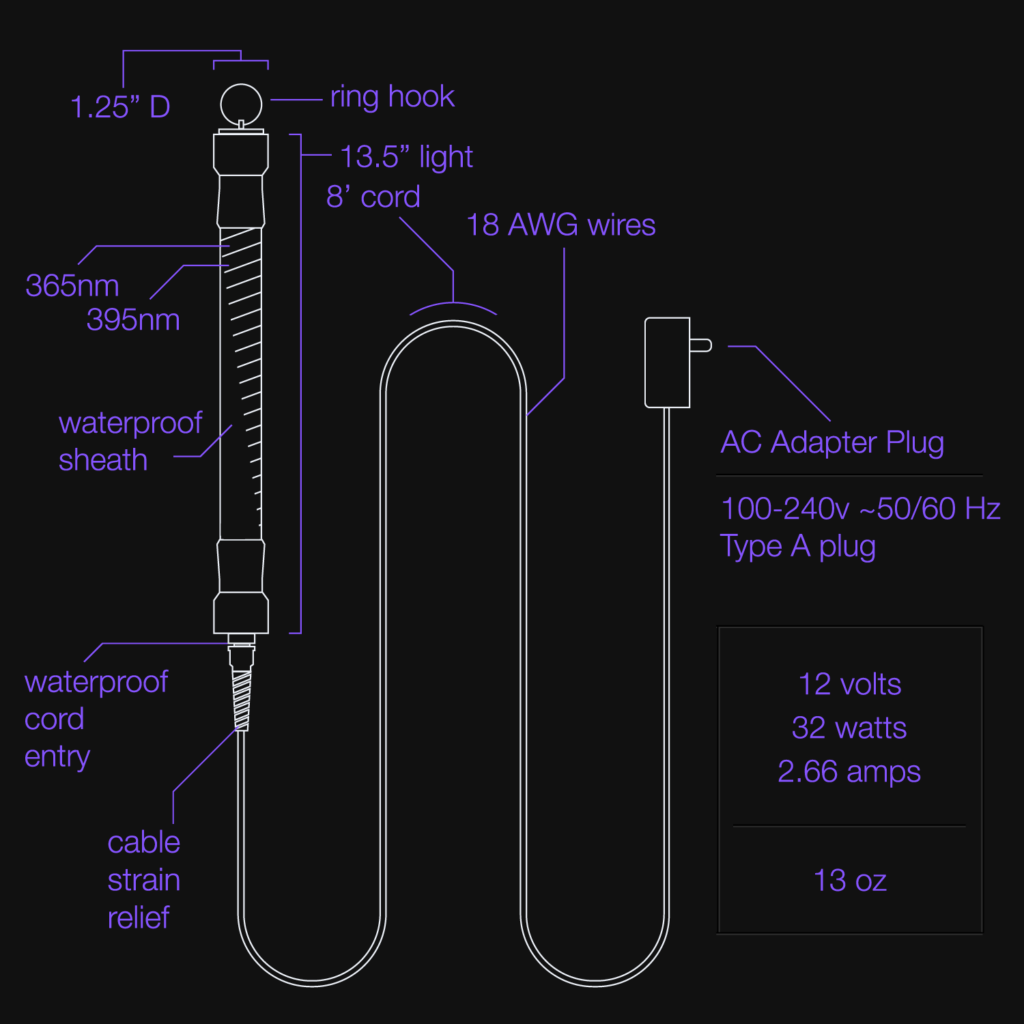
The entoquip light can be powered by outlets, portable generators, portable power stations & power banks.

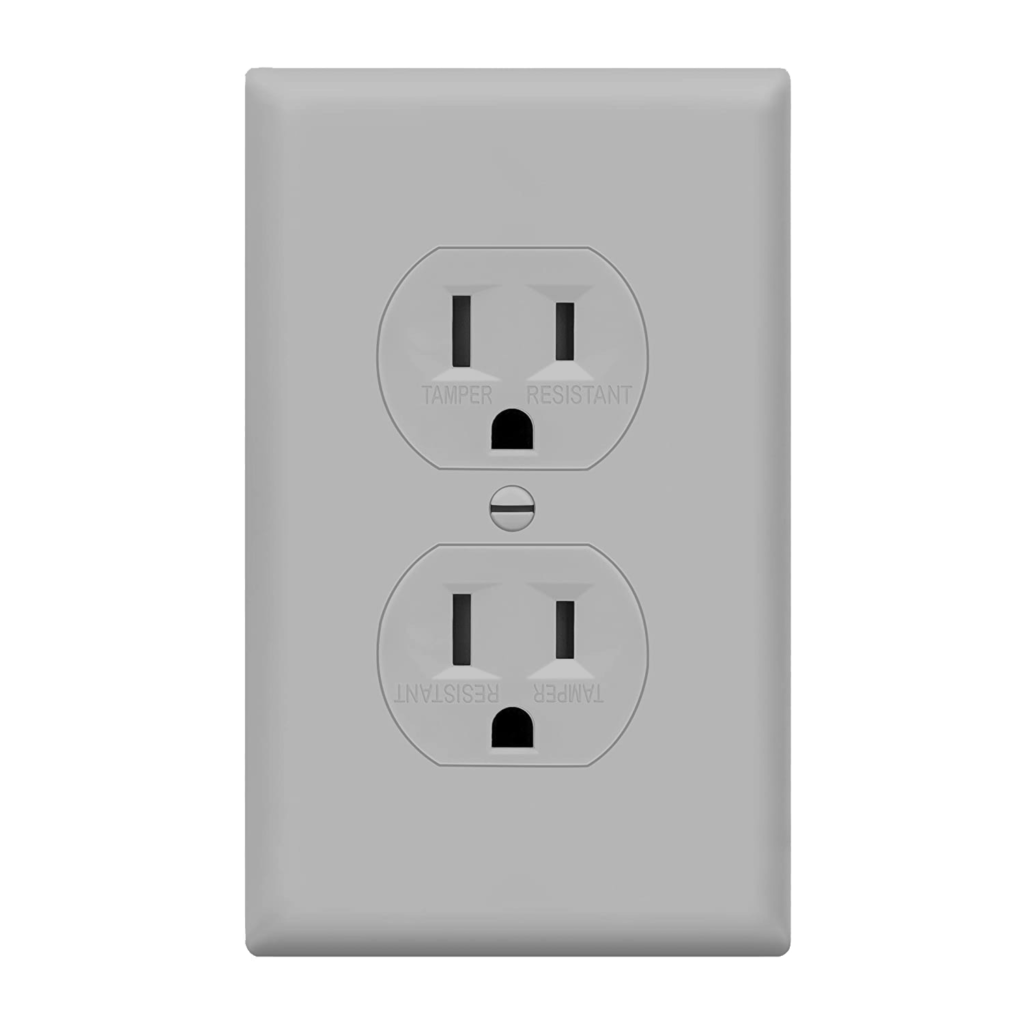
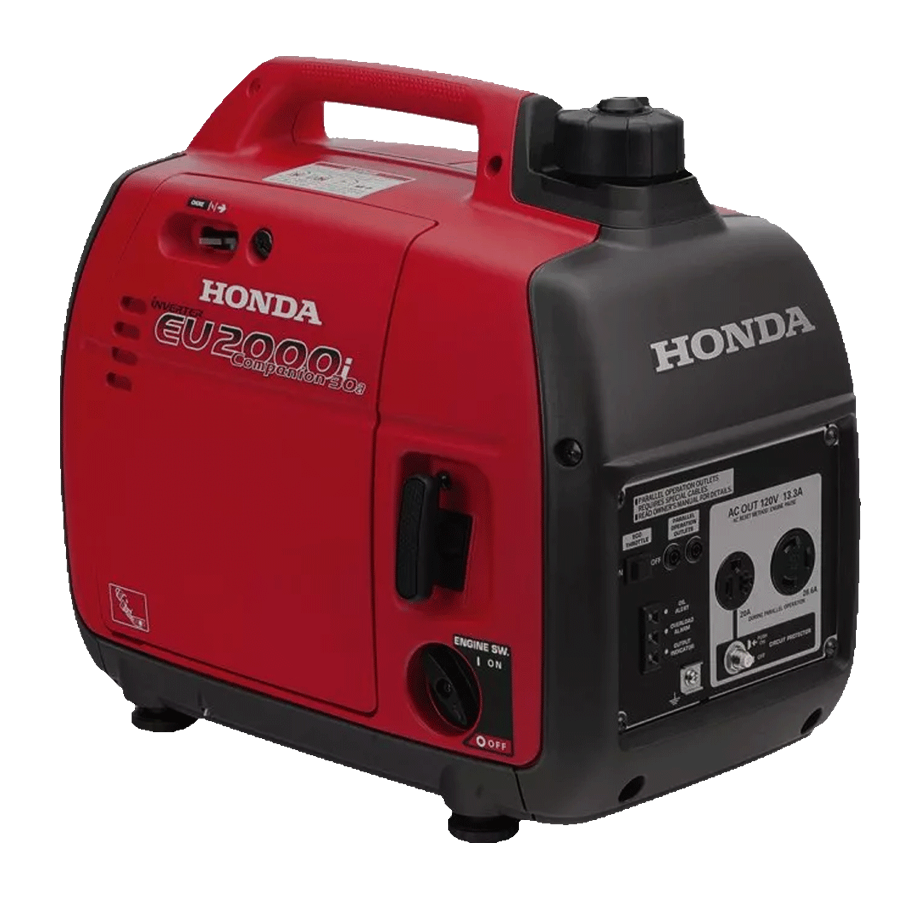
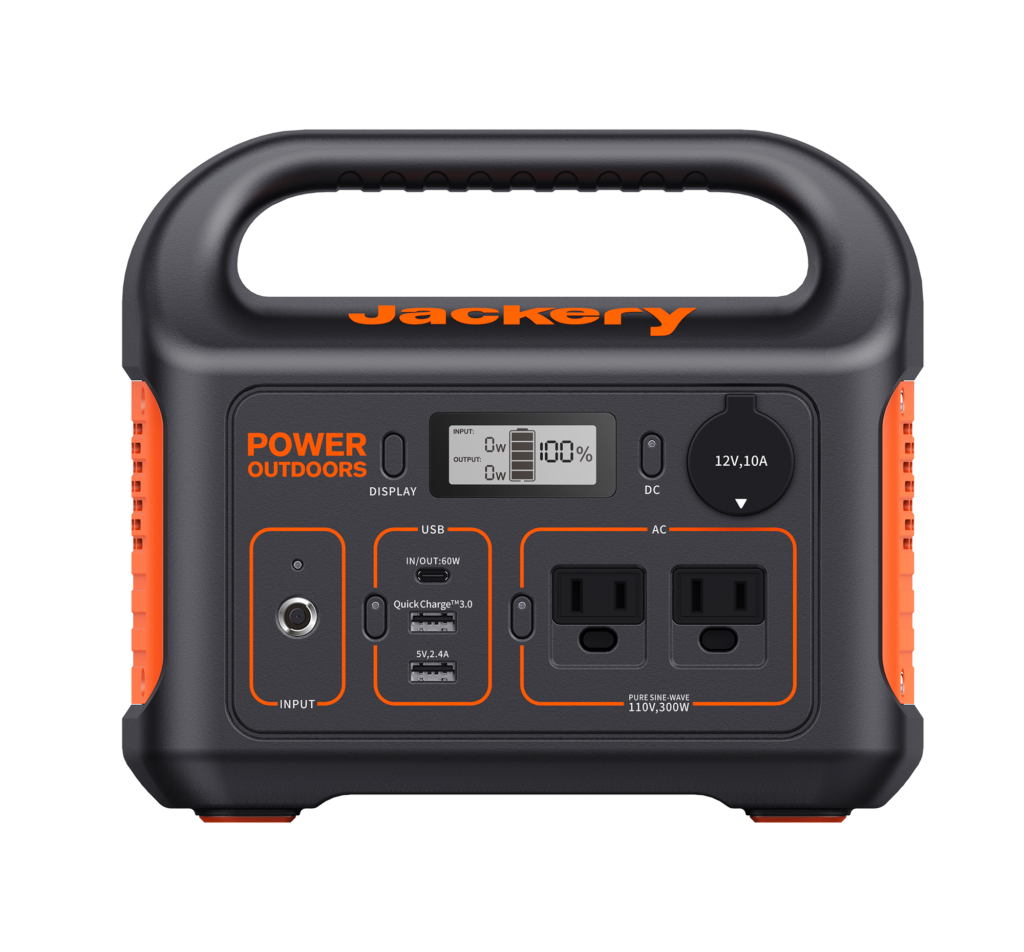
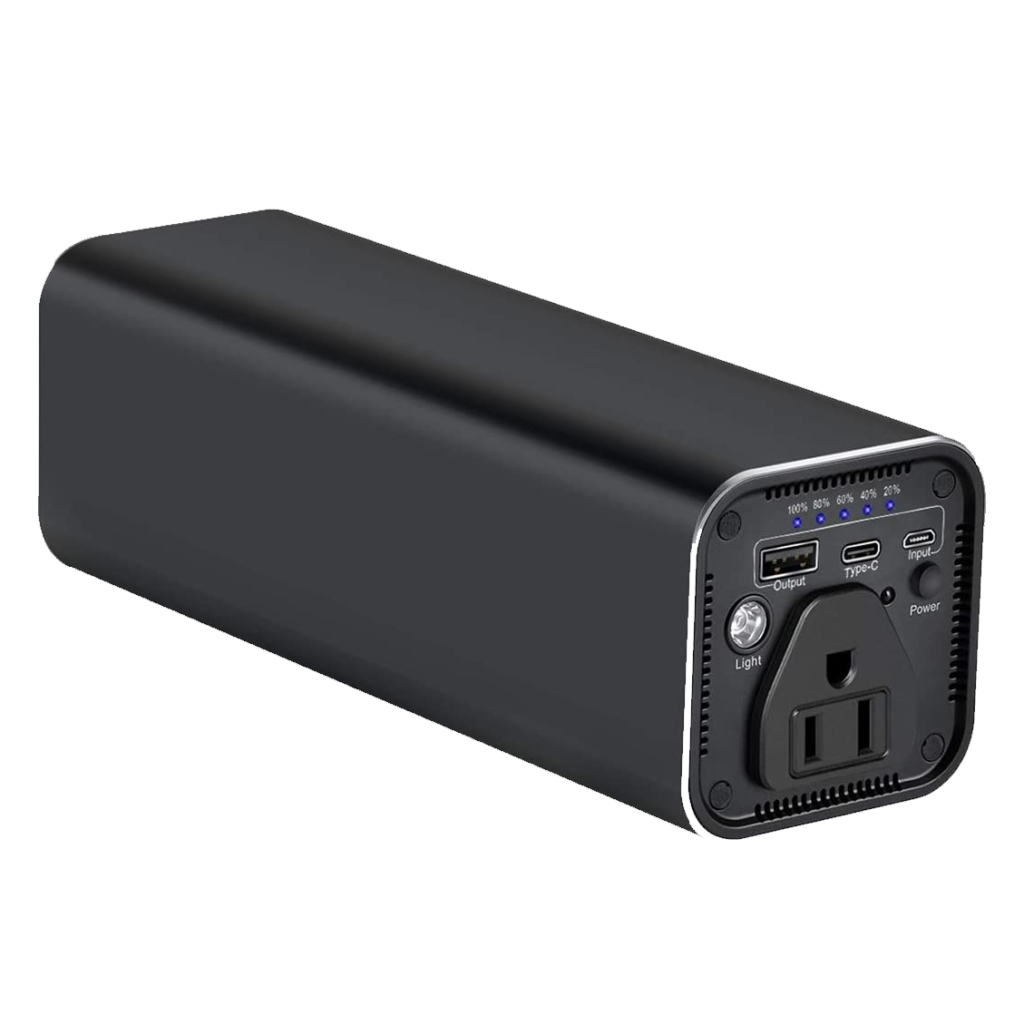




Laptop power banks of 100 watt-hours or less can be taken on airplanes and used with entoquip lights anywhere in the world.

22 in stock
edit quantity in cart

advantages
Night-flying insects, such as beetles and moths, use the moon’s light to orient themselves when flying, specifically the UV spectrum. Longwave UV (UVA) is electromagnetic radiation with a wavelength between 315 and 400 nm. UVA is closest to the visible spectrum and safest for our eyes. Multiple studies have shown that the exact wavelength of UVA light isn’t significant, as all blacklights attract similar numbers of insects. Regardless, our lights have LEDs of both 365nm and 395nm, to help cover as much of the UVA spectrum as possible with modern LED technology.
It’s recommended to avoid looking directly at UV light, and to wear some kind of UV protective glasses when using blacklights.
There’s a high density of LEDs on the entoquip light. It will get “hot” to the touch. It’s a common misconception that LEDs run cool.
Questions or feedback?